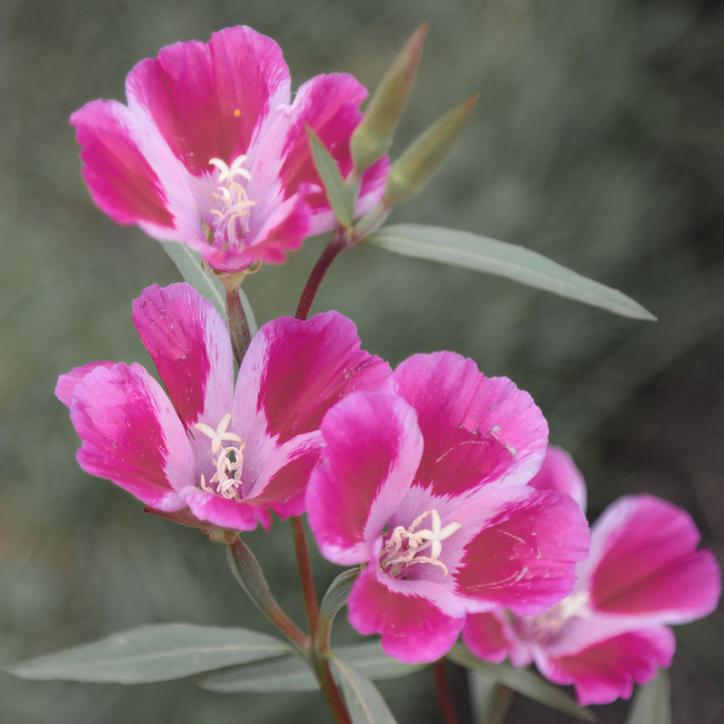Clarkia Plant
Clarkia (Clarkia amoena) is an annual that grows 1-3 ft tall, hardy in USDA Zones 6-10, prefers well-drained, loamy soil, full sun to part shade, medium moisture, and has no edible or medicinal uses.

Habit
Upright
Height
30-90 cm
Growth
Annual
Soil
Well-drained, loamy
Shade
Full Sun
Moisture
Moderate
Edible
No
Medicinal
No
Origin
North America
Climatic Condition
Temperate
Temperature (°)
10-25°C
Humidity (%)
50-80%
Potting media
Peat, compost
Fertilizers
Balanced NPK
Watering
Moderate watering
Plant Weight
100-300 g
Flowering Time
Spring, Summer
Soil Ph level
6.0 - 7.5
Water Ph level
6.0 - 7.5
Soil EC
1-2 dS/m
Yield Per Plant
Ornamental
NPK ratio
10:10:10
life Span
Annual
Health Benefits
Decorative flowering plant
Suggested Grow Media or Potting Mix ?
50% sandy soil, 30% compost, 20% perlite
Suggested Fertigation/Fertilizers
Fertilize every 4 weeks with a balanced, water-soluble fertilizer.
Common Diseases and Remedies
Powdery Mildew, Gray Mold, Aphids, Leaf Spot, Root Rot.
White powdery growth on leaves Gray, fuzzy mold on leaves and flowers Yellowing leaves, sticky residue on leaves Brown or black spots on leaves Wilting, yellowing leaves, root discoloration
Neem oil, baking soda spray Improve air circulation, remove affected parts Insecticidal soap, ladybugs Remove infected leaves, use compost tea spray Improve soil drainage, use beneficial soil microbes
Sulfur-based fungicides, Iprodione or thiophanate-methyl, Insecticides containing imidacloprid, Copper-based fungicides, Fungicides with metalaxyl or mefenoxam.
HEALTH BENEFITS
· Mainly used as an ornamental plant, contributing to mental well-being.
· Some species have mild antimicrobial properties.
· The plant extract may have potential skin-soothing effects

